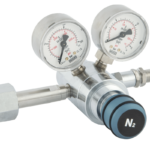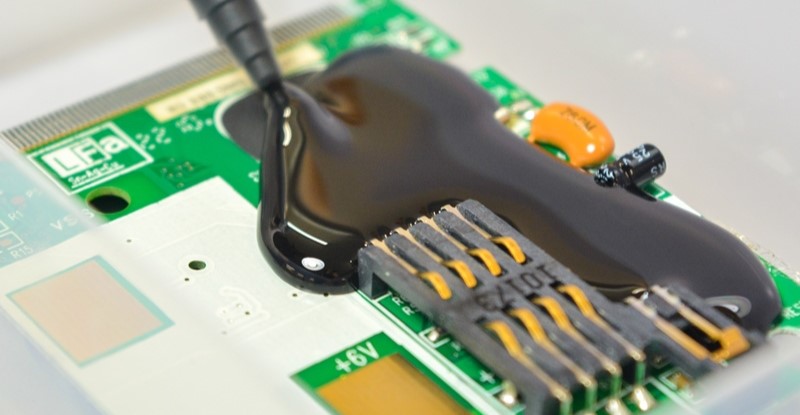In the realm of industrial adhesives, epoxy formulations stand out as versatile and reliable solutions. Beyond their conventional role in bonding, these compounds have evolved to meet the diverse demands of various industries, including electronics. This article delves into the intricacies of epoxy adhesive formulations, exploring their applications, with a particular focus on epoxy potting compounds for electronics, two-component epoxy adhesives, and the innovation behind deep material underfill epoxy.
Understanding Epoxy Adhesives:
Epoxy adhesives are renowned for their exceptional bonding properties, offering high strength, durability, and resistance to chemicals and environmental factors. Their versatility has led to widespread use across industries, ranging from automotive and aerospace to electronics and construction. The unique chemistry of epoxy resins allows for a range of formulations tailored to specific requirements, making them indispensable in various applications.
Epoxy Potting Compounds for Electronics:
Electronics assembly demands precision and protection against external elements, and epoxy potting compounds play a crucial role in meeting these requirements. Potting involves encapsulating electronic components in a resin to safeguard them from moisture, vibration, and other environmental stresses. Epoxy potting compounds, with their excellent electrical insulation properties and resistance to heat, provide a protective barrier around delicate electronic parts.
These compounds are specifically engineered to prevent the infiltration of moisture and contaminants, ensuring the longevity and reliability of electronic devices. The low coefficient of thermal expansion of epoxy potting compounds minimizes stress on components during temperature variations, making them ideal for applications where thermal stability is critical.
Two-Component Epoxy Adhesives:
Two-component epoxy adhesives, also known as dual-cure or 2K epoxy adhesives, represent a significant advancement in adhesive technology. Comprising a resin and a hardener, these adhesives only initiate the curing process when the two components are mixed. This characteristic allows for precise control over the bonding process, making them suitable for applications with varying substrates and curing conditions.
The controlled curing time of two component epoxy adhesives enhances their versatility. Industries such as automotive, aerospace, and electronics benefit from the ability to fine-tune the adhesive’s properties to match specific assembly requirements. The combination of a wide range of formulations and the ability to tailor cure times makes two-component epoxy adhesives indispensable in manufacturing processes where efficiency and precision are paramount.
Deep Material Underfill Epoxy:
As electronic devices become smaller and more powerful, the need for effective thermal management and stress relief within the components becomes increasingly critical. Deepmaterial underfill epoxy addresses these challenges by filling the gaps between a semiconductor package and the printed circuit board (PCB), forming a strong bond that enhances mechanical stability and thermal conductivity.
The innovation behind deep material underfill epoxy lies in its ability to penetrate and fill narrow gaps, providing a complete and void-free encapsulation of sensitive electronic components. This not only enhances the mechanical strength of the assembly but also improves thermal transfer, preventing the buildup of heat that could compromise the performance and lifespan of electronic devices.
The Science Behind Epoxy Adhesive Formulations:
The effectiveness of epoxy adhesives lies in the careful balance of their chemical composition. Epoxy resins, derived from a combination of epoxide monomers and hardeners, undergo a curing process that transforms them from a liquid to a solid state. The selection of specific additives and modifiers allows manufacturers to tailor the adhesive’s properties, such as flexibility, toughness, and adhesion strength.
Innovations in epoxy formulations often focus on improving specific characteristics to meet the evolving demands of industries. For example, researchers may explore additives that enhance thermal conductivity in deep material underfill epoxy or modify the viscosity of epoxy potting compounds for improved flow and coverage.
Advancements in nanotechnology have also played a role in enhancing the properties of epoxy adhesives. Nanoparticles, such as graphene or carbon nanotubes, can be incorporated into epoxy formulations to impart additional strength, conductivity, or flame retardancy. These nanomaterials contribute to the development of epoxy adhesives with superior mechanical, electrical, and thermal properties.
Future Trends and Sustainability:
The continuous evolution of epoxy adhesive formulations is driven by a commitment to sustainability and environmental responsibility. Researchers are exploring bio-based epoxy resins derived from renewable sources as an alternative to traditional petrochemical-based resins. This shift not only reduces the environmental impact but also addresses concerns about the availability of fossil-based resources.
Furthermore, there is a growing emphasis on the recyclability of epoxy adhesive systems. Innovations in reversible cross-linking technologies allow for the disassembly of bonded components, promoting the recycling and reusability of materials. These advancements align with the broader industry trend towards circular economy principles, minimizing waste and environmental impact.
Conclusion:
Epoxy adhesive formulations have come a long way from their traditional role as bonding agents. The tailored solutions provided by epoxy potting compounds for electronics, two-component epoxy adhesives, and deep material underfill epoxy showcase the adaptability and innovation within this field. As industries continue to demand high-performance materials, the science behind epoxy formulations will likely drive further advancements, pushing the boundaries of what is possible in the world of adhesives. The integration of sustainable practices and a focus on recyclability will play a pivotal role in shaping the future landscape of epoxy adhesives, ensuring their relevance and applicability in an ever-changing industrial environment.










